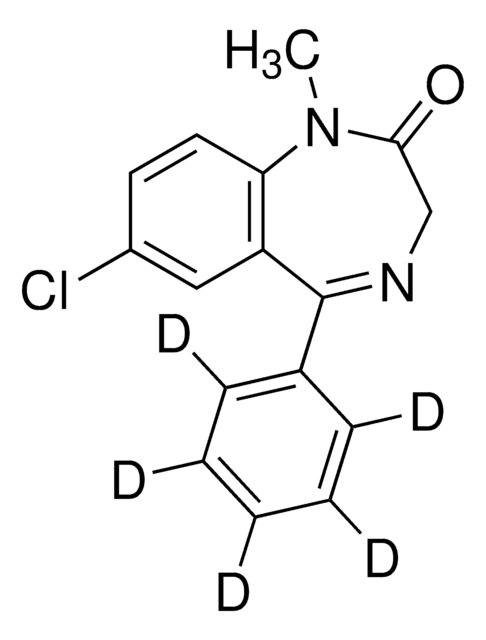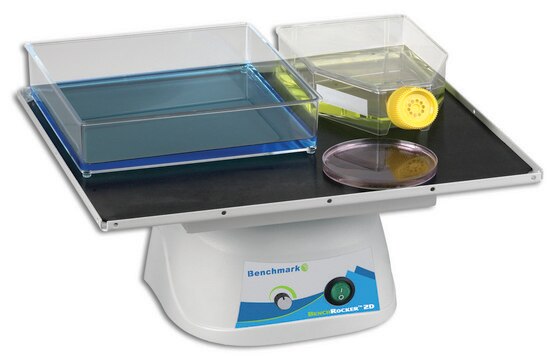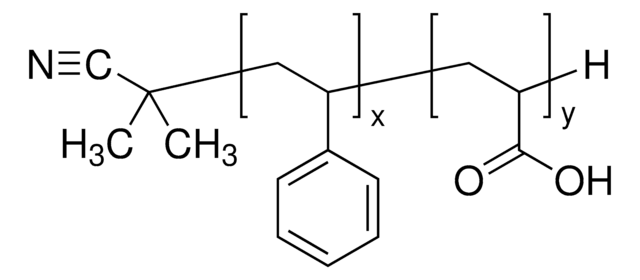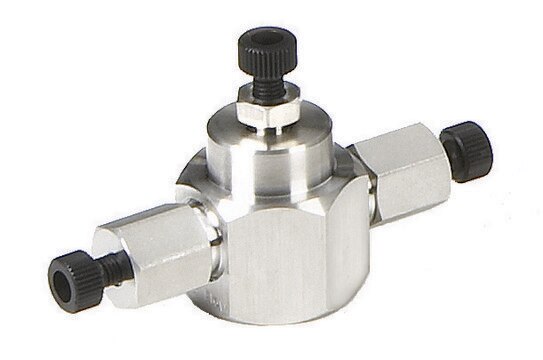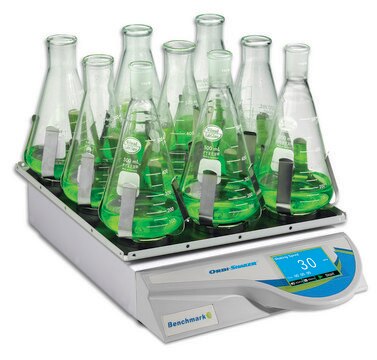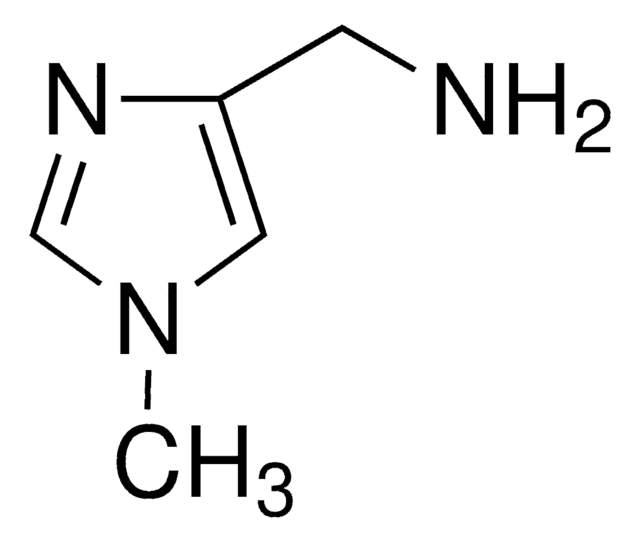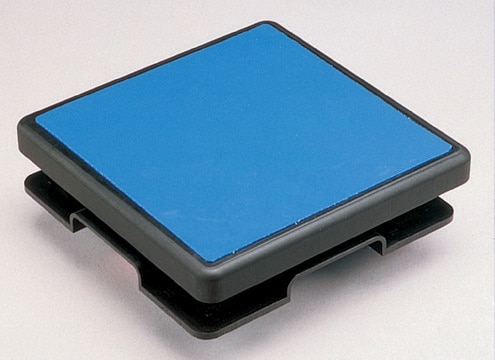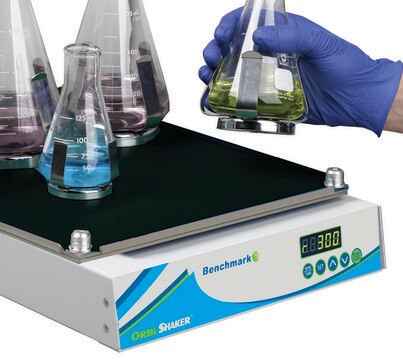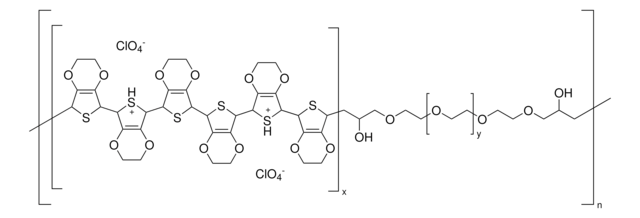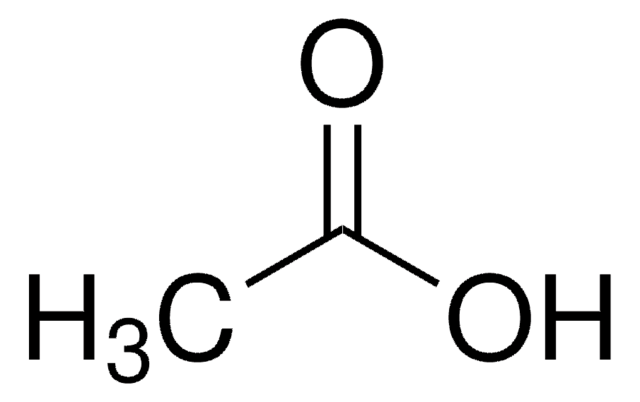735817
Polypyrrole-block-poly(caprolactone)
0.3-0.7 wt. % (dispersion in nitromethane), contains p-toluenesulfonate as dopant
Synonym(s):
Biotron PP-NM, PCL-block-PPy
About This Item
Recommended Products
form
liquid (dispersion)
Quality Level
contains
p-toluenesulfonate as dopant
composition
Biotron PP polymer, 0.3-0.7 wt. %
ethanol, 4-8 wt. %
nitromethane, 90-95 wt. %
concentration
0.3-0.7 wt. % (dispersion in nitromethane)
conductivity
10-40 S/cm (bulk)
Related Categories
General description
Average transmittance: 70-90%
Biodegradble conducting polymer for bomedical applications. PCL diol blocks have average molecular weight 2000 and PPy block have an average molecular weight of 4000 with a 25% doping level. Good biocompatibility with expected weight loss of 40% at 200 days in pH=7 buffer.
Application
Features and Benefits
Caution
Other Notes
Legal Information
signalword
Danger
Hazard Classifications
Acute Tox. 4 Inhalation - Acute Tox. 4 Oral - Carc. 2 - Flam. Liq. 2 - Repr. 2
Storage Class
3 - Flammable liquids
wgk_germany
WGK 2
flash_point_f
66.9 °F
flash_point_c
19.4 °C
Certificates of Analysis (COA)
Search for Certificates of Analysis (COA) by entering the products Lot/Batch Number. Lot and Batch Numbers can be found on a product’s label following the words ‘Lot’ or ‘Batch’.
Already Own This Product?
Find documentation for the products that you have recently purchased in the Document Library.
Customers Also Viewed
Biomedical Applications
Articles
The application of conducting polymers at the interface with biology is an exciting new trend in organic electronics research.
Optoelectronic Devices Based on Diketopyrrolopyrrole (DPP)-containing Conjugated Small Molecules
While dye sensitization as the basis for color photography has been accepted for a very long time,1 attempts to use this principle for the conversion of solar light to electricity generally had resulted only in very low photocurrents, below 100 nA/cm
Professor Chen (Nankai University, China) and his team explain the strategies behind their recent record-breaking organic solar cells, reaching a power conversion efficiency of 17.3%.
Our team of scientists has experience in all areas of research including Life Science, Material Science, Chemical Synthesis, Chromatography, Analytical and many others.
Contact Technical Service